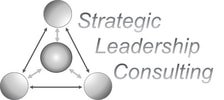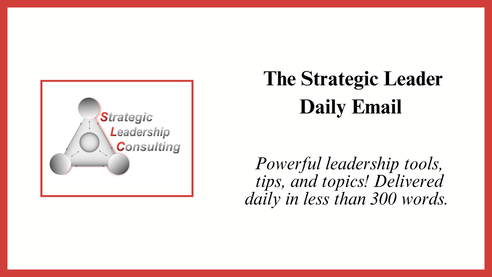|
Today’s email is an adaptation from my Leading from Home video series produced in the first days of the global shutdown in 2020. Although geared towards home, the suggestions are just as critical in our “normal” workspace. Day 4: Communications Ding! Brrrp. Whistle, ring.
Communications clutter is one of the most destructive and unnecessary elements of our work environment. Uncluttered communications look like this:
Why do we disallow ourselves to be unavailable?
You can view a video that expands on this content at my YouTube channel here or my website here. Cheers! Frederick
0 Comments
Colleagues,
Today’s email is an adaptation from my Leading from Home video series produced in the first days of the global shutdown in 2020. Although geared towards home, the suggestions are just as critical in our “normal” workspace. Day 3: Healthy Practices Today we will look at some healthy practices to enact while leading from home. Accepting limitations means accepting that we can’t do everything. There are too many tasks, needs, and people that need attention. Understanding that everything won’t get done means that you choose what gets done today and what doesn’t. Being fully present is the single most powerful thing you can do to both improve your leadership and enhance your state of mind. Being fully present means that you are physically, mentally, and emotionally present to the person or task in front of you. Steps to being fully present:
Strengthening connections is imperative in a time of physical separation and isolation. Try these:
There is a lot more in the video! You can watch it at my YouTube channel here or my website here. Cheers! Frederick Colleagues,
Today’s email is an adaptation from my Leading from Home video series produced in the first days of the global shutdown in 2020. Although geared towards home, the suggestions are just as critical in our “normal” work space. Day 2: Leading from Home - Spaces Routines create behavioral structures. Spaces create physical structures. Remember that we have three overarching themes:
Your home office should do several things for you: Signaling Having a dedicated space (individual or shared) creates a physical signal that you are “at work.” Sitting down (or stepping up to your standing desk!) cues your mind to engage in your work. It serves as a notice to others that you are working, and that they need to observe any interruption protocols you have established. Limiting Physical signaling through being in an “office” space is a first step to limiting distractions and interruptions. Close out of all personal applications and browser windows. They have no place in your workspace and undermine your productivity.
Enhancing The physical layout of your space can make work easier or more difficult. Try and arrange furniture appropriately. Be reflective about inefficiencies or challenges and consider changes to your equipment. Remember that you can view a video that expands on this content at my YouTube channel here or my website here. Cheers! Frederick Colleagues,
It was two years ago this week that I moved from a weekly email to a daily email. I made that shift because I wanted to help people, and I didn’t know how else to do it. The first week of daily emails were actually videos about self-care and leading from home. This week I will distill each of those videos down to a few key bullets but will also include a link to the original YouTube videos in case you want to watch them. Day 1: Leading from Home - Routines Every break in concentration requires refocusing. This is as true for scanning an email notification or news headline as it is for taking a phone call or interacting with someone in your environment. A series of breaks creates a cascading effect that undermines your ability to engage thoughtfully and intentionally. Read the research here. Routines are the practices we engage in daily. Think about routines as being a set of dominoes. If you start your first routine correctly, the rest of them should follow. If you’ve set them up well, your first routine should make it easier to do the second, then the third, and so on. There are four critical parts of the day for routines:
The video is 25 minutes and I go into details about how to build strong routines around each of these critical parts of the day. You can watch the video on my website or on YouTube. There is also a downloadable PDF with some details. Cheers! Frederick Colleagues,
Still haven’t found five minutes? Let’s take a multi-step approach:
One of two things will happen:
Reflect: With a precious five minutes a day, what could you do that would make something in your organization just a bit better? Have a great idea? Click here to share it with me! Cheers! Frederick |
Categories
All
Archives
July 2024
|


 RSS Feed
RSS Feed